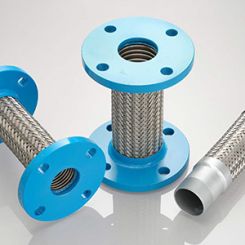Water reclamation facilities are subject to a wide range of influent flow rates. They must be designed to operate at a peak design flow, required during wet weather events, but also must operate efficiently and reliably at significantly reduced flow rates during ordinary operation. Accordingly, many pumps in such a process must produce an often-wide spectrum of flow rates. A simple solution is to throttle the output of the pumps with a regulating valve, controlling flow in much the same way that adjusting a faucet reduces flow in household water systems. However, when pumps are large enough to require tens or hundreds of horsepower (hp), this method wastes unacceptable amounts of energy. Even though flow can be controlled accurately, throttling the pump discharge usually results in reduced flow but almost no reduction in the required shaft hp to drive the pump. The pump is forced to operate at higher system head to reduce the flow, not at or near its best efficiency point (BEP). In addition to increasing the energy required to maintain the necessary flow and pressure, this can lead to early mechanical failure of the pump.
 Figure 1. Pump load as a function of speed (ideal pump). (Graphics courtesy of Dynamatic)
Figure 1. Pump load as a function of speed (ideal pump). (Graphics courtesy of Dynamatic) Figure 2. Pump load as a function of speed (real-world example)
Figure 2. Pump load as a function of speed (real-world example)  Figure 3. Cross section of an eddy current drive’s internal components
Figure 3. Cross section of an eddy current drive’s internal components- The motor draws its power from the source at a clean, full voltage, full frequency, with no induced harmonic currents. Therefore, there are no additional I2R losses in feeder circuits, switchgear, transformers, etc. There are no requirements for harmonic filter devices or reactors, which would contribute to total losses if they were needed.
- The motor will not experience elevated losses due to any harmonic currents, as it operates on sinusoidal power, for which it is designed.
- There will be no need for additional cooling to the motor. It runs at full speed and benefits from a full flow of cooling air, regardless of pumping demand.
- There is no need for auxiliary cooling or air conditioning. Most of the eddy current drive losses are a result of slip in the rotating machine, and its location is normally well suited to absorb and dissipate the associated heat.
Conclusion
Saving money will probably always be the primary motivator in seeking better efficiency. However, as more communities and local governments desire to reduce CO2 emissions, reduced electrical consumption is recognized as a means to achieve a substantial reduction. Most agencies consume power generated by fossil fuel (coal or natural gas). According to the U.S. Department of Energy, 1 kW-hr of electrical consumption is the equivalent of:- 1.5 pounds of CO2 from a coal-fired power plant, or
- approximately 1.7 miles driven in a typical automobile

